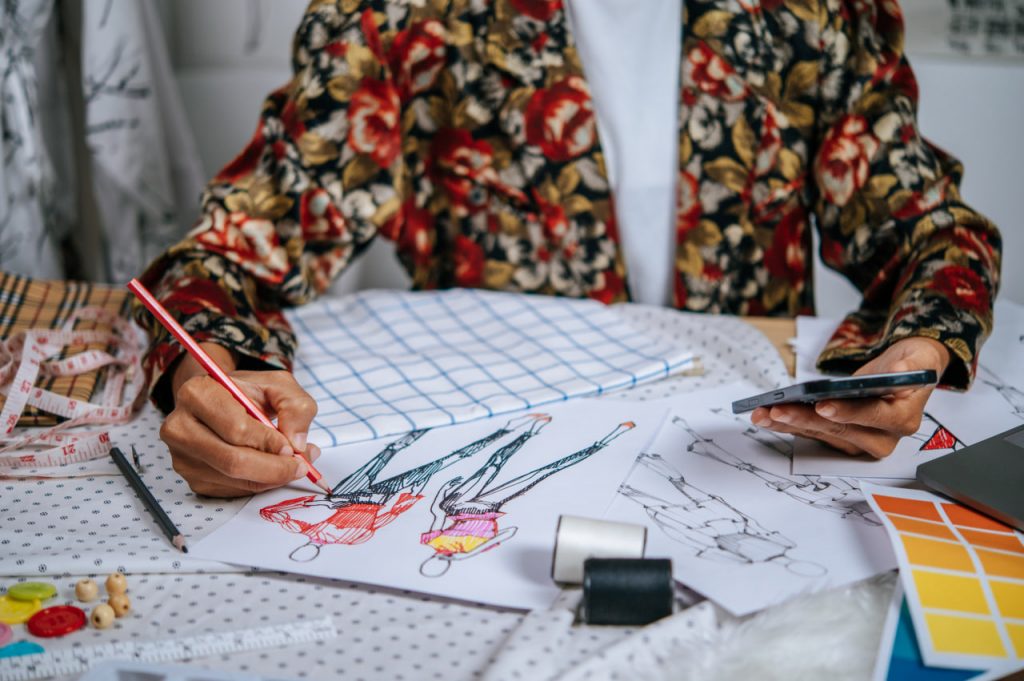Fashion illustration is a dynamic and creative way to express your ideas, showcase designs, and communicate fashion concepts. Whether you’re dreaming of a career in fashion design or just exploring your artistic side, learning the right techniques is key to elevating your skills. Here are five essential fashion illustration techniques that every beginner should master:
1. Mastering Basic Figure Drawing
The foundation of any fashion illustration is the human figure. As a beginner, it’s important to understand the proportions and structure of the body. Fashion sketches often feature elongated figures, but even in stylized illustrations, the basic understanding of anatomy is crucial.
- Tip: Start with simple stick figures or skeleton outlines to get a feel for the posture and flow of the body. Gradually add details like the shape of the head, torso, arms, and legs, and don’t forget to keep the figure balanced.
Once you’re comfortable with proportions, move on to sketching the figure in various poses. This will give your illustrations movement and life, which is especially important when illustrating garments in action.
2. Learning to Draw Fashion Proportions
Fashion illustrations often exaggerate certain features, especially the length of the legs, to create a more elegant and high-fashion look. The classic “9-heads” rule is commonly used, which means that the human figure is divided into nine equal parts, with each “head” representing a proportion of the body.
- Tip: Start by dividing your sketch into nine parts and use these sections to guide your figure drawing. This will help you create figures that have the ideal fashion proportions—long and graceful without losing the human form.
Mastering fashion proportions will allow you to sketch figures that appear both realistic and stylized, capturing the essence of the garment.
3. Understanding Fabric and Texture Rendering
A significant part of fashion illustration is not just drawing the garment, but also making it look like the fabric it represents. The texture and flow of materials—whether it’s silk, denim, or wool—add realism and depth to your sketches. Understanding how to render different fabrics is an essential skill.
- Tip: Observe the folds and draping of real fabrics. Pay attention to how light and shadow play on materials. Use light, curved lines for soft fabrics like silk, and sharp, angular lines for stiffer materials like denim or leather. Practice by sketching fabrics and adding details like pleats, creases, and folds to make them appear more dynamic.
Experiment with shading techniques to create depth. This is where light and dark areas will make your sketches come to life and show how fabric interacts with movement and light.
4. Using Color to Enhance Your Illustrations
Color brings your fashion sketches to life and can convey mood, style, and trends. Whether you’re working with traditional media like watercolors and colored pencils, or digital tools like Photoshop, knowing how to apply color correctly is vital.
- Tip: Start by choosing a color palette that complements the mood or theme of the design. When coloring, consider where your light source is and apply shadows accordingly. Use lighter colors to highlight areas hit by light, and darker shades to emphasize depth and folds in the fabric.
Don’t be afraid to experiment with color blocking, gradients, and even patterns to add more interest to your designs. You can also use color to enhance certain elements, like accessories or textures, to make them stand out.
5. Perfecting the Use of Line Work and Detailing
In fashion illustration, lines are your primary tool for defining shape and structure. Strong, clean line work is essential for creating confident and polished illustrations. The lines you use can be thick or thin, fluid or sharp, depending on the mood you want to convey.
- Tip: Practice using a variety of line weights to create contrast in your drawings. Thicker lines can define the outer edges of a garment or figure, while finer lines can add delicate details like lace, buttons, or jewelry. The key is to create a balance—don’t overuse heavy lines where you want softness, and avoid too much fine detail where you need boldness.
Once your basic sketch is complete, refine it by adding more intricate details such as stitching, textures, or patterns. These small touches can make a significant difference in the overall realism and impact of your illustration.

